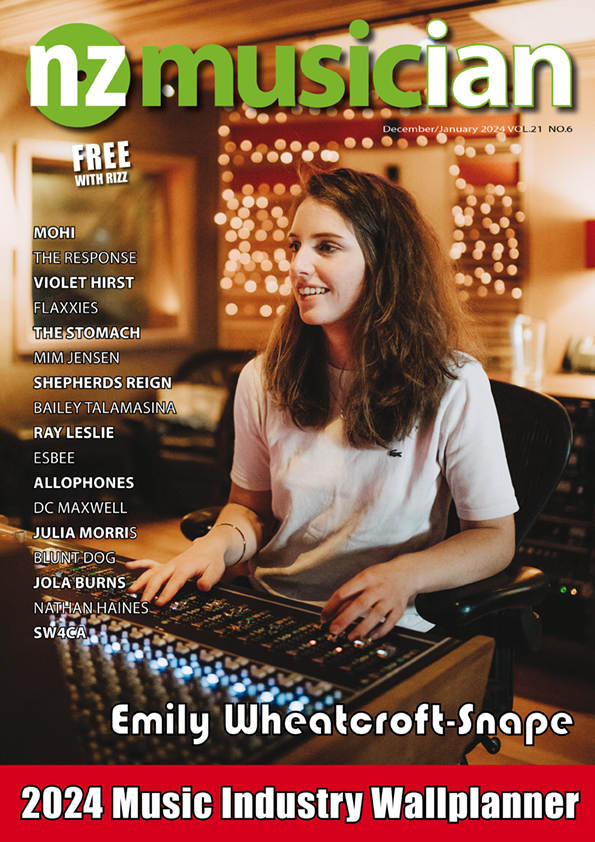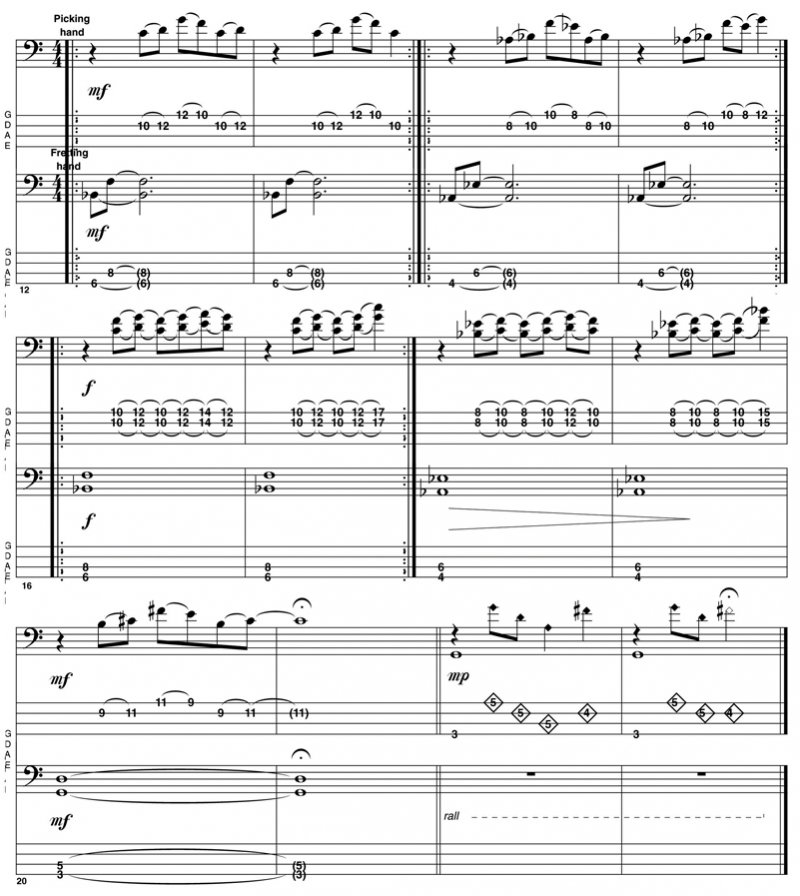Deep Thinking: Mr. Faun’s Afternoon
Deep Thinking: Mr. Faun’s Afternoon
A very happy and successful New Year to you. Following on from the last issues cross-handed tapping piece, I have written another piece combining some harmonics with fretted root notes and some cross-handed technique. As you will see, the piece is called Mr. Faun’s Afternoon, a less than subtle reference to a composition by the great French composer, Claude Debussy. Debussy often used pentatonic scales and Lydian scales (same as a major scale but with a sharpened fourth note) to give his music a whimsical character in common with the impressionist period in which he composed (1880s to early 1900s), but enough of the music history.
The first section needs your first fretting finger holding root notes on string 4 while your third or fourth fretting finger is used to play the harmonics (node points represented by the numbers in the diamonds in the tablature like the last issue). Notice that some of these fret numbers have a + next to them, which means touch the string just in front of the fret. Remember that the fretting touch needs to be light but the picking needs to be firm.
Bar 8 has a plucked open E string with your first fretting finger touching the harmonic notes as a bar chord. Bar 9 is a 2/4 bar, so instead of counting to 4, just count to 2. Bars 9 to 11 need the second fretting finger holding the root note while finger one touches the harmonic notes, again as bar chords.
The second section of the piece should be easy after the last issues workout. Learn each hand part separately; this will make life easier when you combine the two.
The fretting hand part is quite simple. It just requires you to tap perfect fifth double stops and sustain them beneath the tapped notes played by the picking hand that come in immediately afterwards. The melodic phrases tapped by the picking hand start off as single note patterns and the curved lines between each note mean that you slide from note to note.
Each of the initial two bar phrases is repeated. From bar 16, you will be using your first and second picking fingers to tap a perfect fourth double stop to play a slightly different phrase that, again, slides from double stop to double stop. Also in bar 16, you will notice that one of the double stops is E and A above a fretting hand perfect fifth of Bb and F. This is the Lydian scale, as E natural in a Bb major scale is the sharpened fourth. You will hear the harmonic effect. The same concept of the sharpened fourth happens a whole tone lower in bar 18 and in G major in bar 20. The final two bars are like the opening section and go back to a short harmonic two bar figure.
Remember, practice slowly and get both parts right before you attempt the complete piece. Next issue, I thought we might look at some funky stuff and I will be writing about one of my favourite bass players, Frank Prestia of Tower of Power. Check him out on Youtube.
Dr. Rob Burns is a senior lecturer in music at the University of Otago in Dunedin. As a former professional studio bassist in the UK, he performed and recorded with David Gilmour, Pete Townshend, Jerry Donahue, Isaac Hayes, Sam and Dave, James Burton, Ian Paice and Jon Lord, Eric Burdon and members of Abba. He played on the soundtracks of many UK television shows, such as Red Dwarf, Mr. Bean, Blackadder and Alas Smith and Jones. Rob is currently a member of Dunedin bands Subject2change and The Verlaines.

